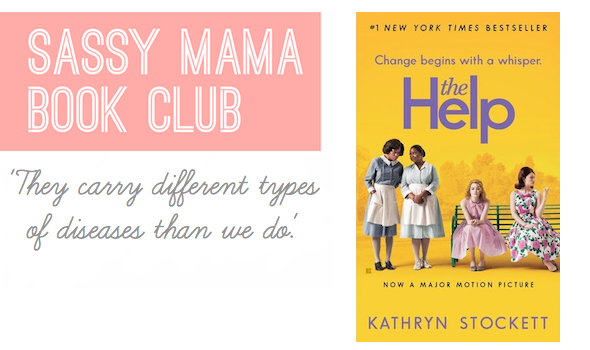I first heard about The Help soon after it was published in February of 2009. But it was 444 pages. I put it off.
Very quickly, the novel became a bestseller. Soon The Help was the must-read choice of every book club in the country. Now there are 3,500 reader reviews on the novel’s Amazon page.
What’s the attraction? The Help is about something.
That is, something real. Something that matters. Most of all, something that matters to women, who are, as it happens, the world’s most dedicated readers.
And now there’s a movie too. Do you think anybody will care about a film that deals with the Civil Rights movement of the early 1960s starting to reach African American maids and their white employers in Jackson, Mississippi? After a lifetime of special-effects craporamas at the multiplexes? Yes. Me too. But before you see the film, I suggest you read the book.
The Help is very much a book for women. All the main characters are female – young white Southern women and their African-American maids. And in Kathryn Stockett’s version of Jackson, Mississippi, in 1962, there is no relationship more complicated, more delicate, more fraught.
The white women are, in the main, graduates of the University of Mississippi, where it seems that they mostly learned how to get married the week after they graduate. They return to Jackson in triumph, squeeze out a baby, and promptly turn their offspring over to African-American women to raise, while they join the Junior League and devote their energies to such worthy projects as fundraisers for the Poor Starving Children of Africa.
The African-American maids are, by temperament, maternal and big-hearted. They bathe their surrogate children in love until it’s time for the kids to go to school and unlearn the lessons of their early years so they can carry on the Southern tradition of first and second-class citizenship based on race.
The story shows how African-American maids were, in essence, untethered slaves – and that their white employers were also not free either, albeit in a rich, cosseted prison built on an irrational, unearned superiority.
In 1962, as the novel has it, a few things happen to change all that.
First, Eugenia Skeeter Phelan graduates from Ole Miss without a husband or even a prospect. Instead, she has a quirky dream – she’ll be a writer. She gets a starter job at the Jackson paper, writing a household advice column. She knows nothing about housekeeping so she arranges to interview maids for that information.
Second, Hilly Holbrook (the most narrow-minded Junior Leaguer of them all) decides that black maids carry different kinds of diseases than we do and really ought to use separate and very unequal bathrooms in their employers’ homes. And she makes that into a Junior League project.
Third, something has broken inside Aibileen, a maid now looking after her 17th white child. She’s not as mouthy as her best friend, Minny, but her fuse is shortening. Trouble lies ahead.
Trouble comes in the form of the emerging civil rights movement, which turns a random conversation Skeeter has with a publishing editor in New York into an Idea – that there’s a book in Skeeter’s chats with African American maids. Innocently, Skeeter tries to set up interviews with a dozen of the help. It’s a dangerous project; in Mississippi, white women were supposed to keep their distance from blacks, and black women knew better than to share what they saw in their employers’ homes. So the book project is more than sufficient trouble to drive a plot that has millions of readers cheering Sketeter’s audacity and admiring the maids’ courage.
Those readers aren’t wrong – this book is the most satisfying commercial project I’ve read in years. It’s fifty pages too long. The black Southern dialect will someday seem mawkish; today, it still sounds right. The maids are long-suffering, delightful, spicy; they’re a dream team of strength, wisdom and compassion. The white women – and this is the novel’s big achievement – are small-minded and pitiable, but they’re never cartoon villains. And the men are in the background; there’s no messy sex to distract readers.
Smartest of all, Stockett has downplayed the horror that was Mississippi in l962. Back then, it wasn’t just Medgar Evans shot in the back outside his home, it was the leaders of state government defining the National Association for the Advancement of Coloured People as ‘Niggers, Alligators, Apes, Coons and Possums’. And more, and worse.
[For example: in 1989, I went to Mississippi to report a story for the New York Times Magazine about the 25th anniversary of the barbaric murders of civil rights martyrs Andrew Goodman, Mickey Schwerner and James Chaney.]
The Help doesn’t sugarcoat racism but keeps the guns and violence always a few miles away. Smart thinking. In popular fiction like this, riling readers with false accusations of stolen silverware works just as well.
If you skim the Amazon comments, you can’t help but be moved by the emotions this book has unleashed – the reviewers are awash in tears. Some write that after they finish the book, late at night, they wake their sleeping husbands to tell them how much they love the lives they have together, and how lucky they are not to be living in Jackson in 1962.
That modest historical awareness is a start. It’s a beacon in the darkness of contemporary book publishing – more and more, The Help looks like our To Kill a Mockingbird.
To buy the paperback from Amazon, click here. For the Kindle edition, click here.
 View All
View All











 View All
View All





 View All
View All


 View All
View All











